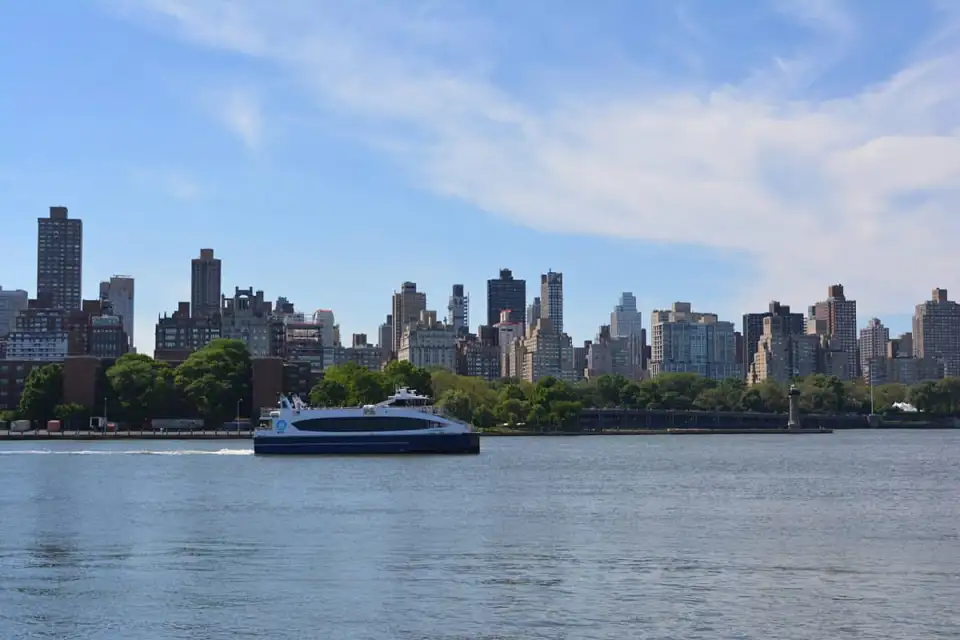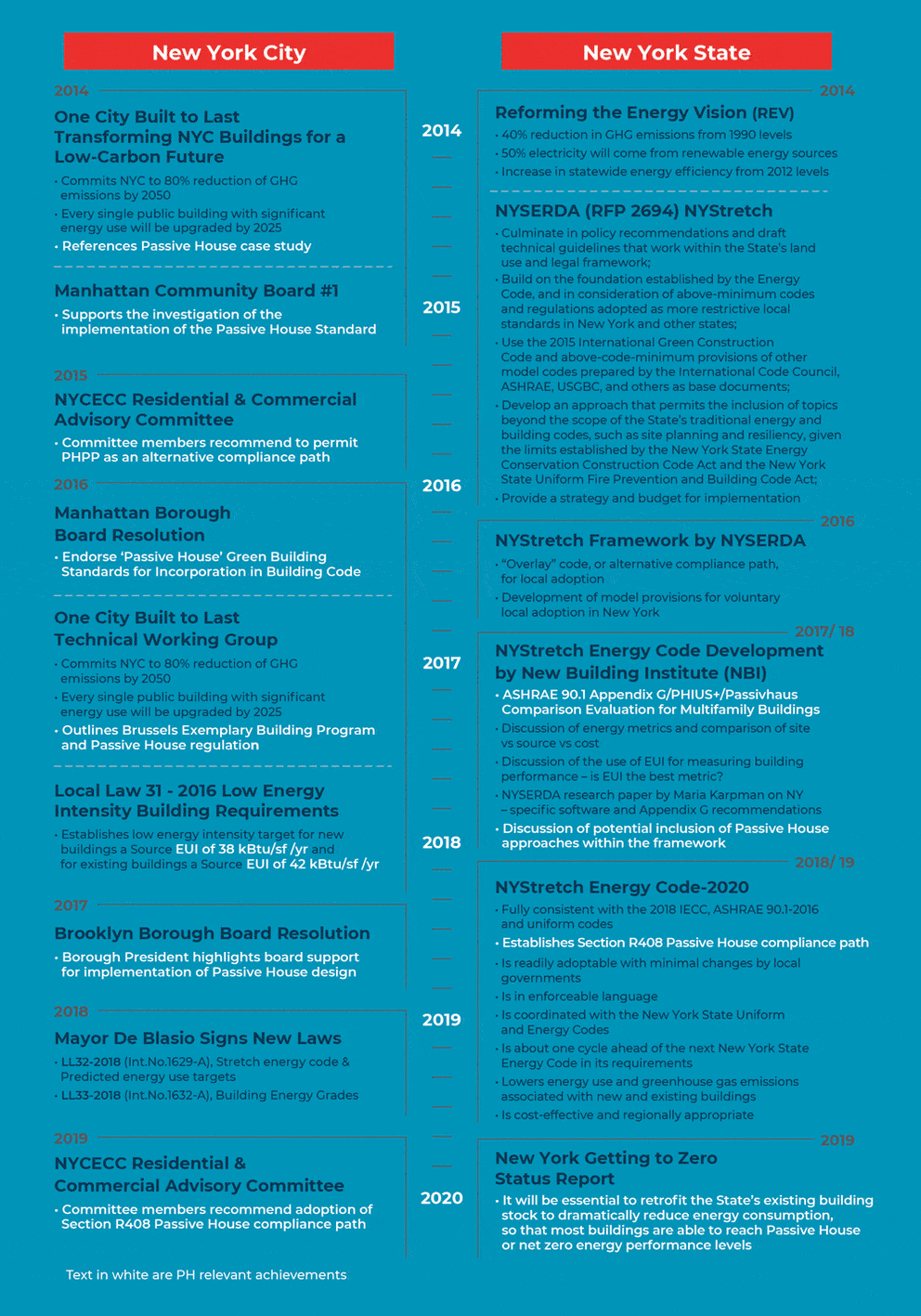
[Editor’s Note: This article was originally published as part of the 2019 NAPHN Policy Resource Guide, release at its 2019 conference. Registration for this year’s NAPHN conference, PASSIVE HOUSE 2020, opens March 2.]
In 2014, Governor Andrew M. Cuomo initiated Reforming the Energy Vision (REV), a comprehensive energy strategy for New York. The Governor has tasked the New York Energy Research and Development Authority (NYSERDA) to set a more restrictive local standard in New York State in order to make the Governor’s strategy for a clean, resilient, and more affordable energy system a reality. In 2014, NYSERDA issued a request for proposal (RFP 2694) to support an above-code-minimum policy initiative (NYStretch) for optional adoption by municipalities. NYSERDA contracted the New Building Institute (NBI) to develop the NYStretch Energy Code. With guidance from an advisory group composed of public and private stakeholders, the residential working group met in June 2017 and discussed potentially including the Passive House approach within the framework as a performance path option. The finalized NYStretch Energy Code-2020 resulted in a code roughly 20% more efficient than residential provisions of the International Energy Conservation Code (IECC) 2018. NYStretch Energy Code-2020 established the residential code, Section R408 Passive House, as an alternative compliance path to be voluntarily adopted by any local municipalities in New York State. This legislation may serve as a potential path forward for other states.
NYPH’s Tips for Advocacy in other Regions
In general, states develop and issue energy codes, but local municipalities adopt them and implement the new energy code requirements. Therefore, it is important to coordinate local and state energy policies. For example at the New York City local level, NYCECC Residential and Commercial Advisory Committee members proposed in 2015 to permit the use of the PHPP energy modeling software as an alternative compliance path according to the Energy Conservation Construction Code of New York State (ECCCNYS) and asked that New York State accept the PHPP’s energy modeling calculations as an alternative compliance software to show building Energy Conservation Code compliance. At the same time NYPH members presented the Passive House concept to community boards throughout the city. This resulted in a Manhattan and Brooklyn Borough President resolution in support of Passive House. The local achievements have supported the state efforts to emphasize the importance of the Passive House concept as an alternative performance compliance path.
It is essential to prepare and build resources in local departments, since building departments need to examine plans and issue building permits that comply with the new energy code requirements, such as Section R408 Passive House. A lack of training and technical expertise at the local level can undermine the stated goal of achieving greenhouse gas reductions of 80% by 2050. New York State could consider establishing a NYStretch Council to resolve implementation issues and provide support, training and resources, similar to that of British Columbia’s Energy Step Code.
NYPH (New York Passive House) is poised to work with public and private stakeholders to implement Passive House policies such as the NYStretch Energy Code throughout New York State.

Building code progress, courtesy of NAPHN Policy Resource Guide.